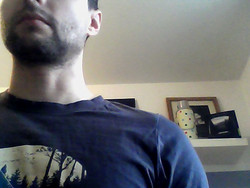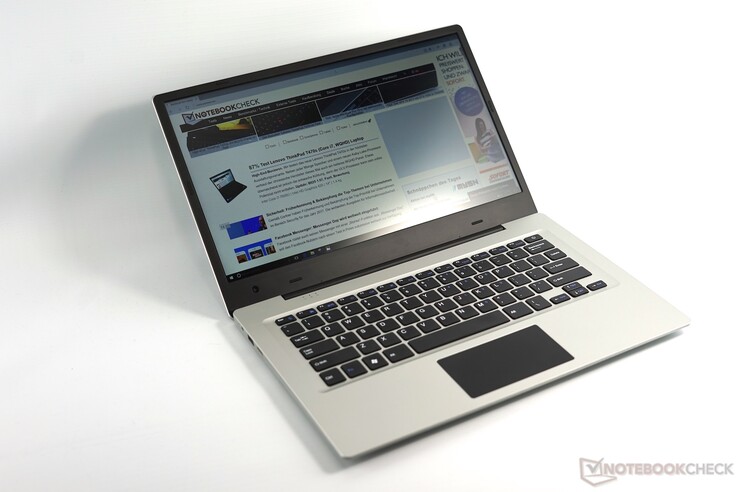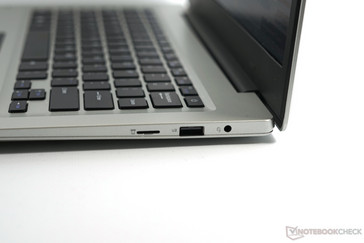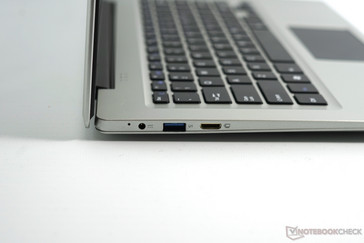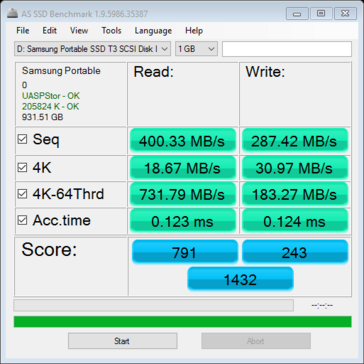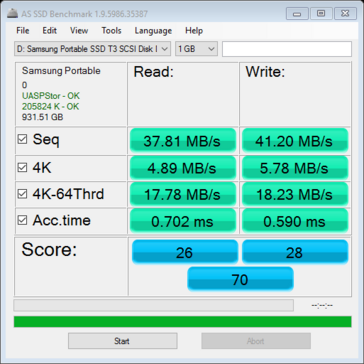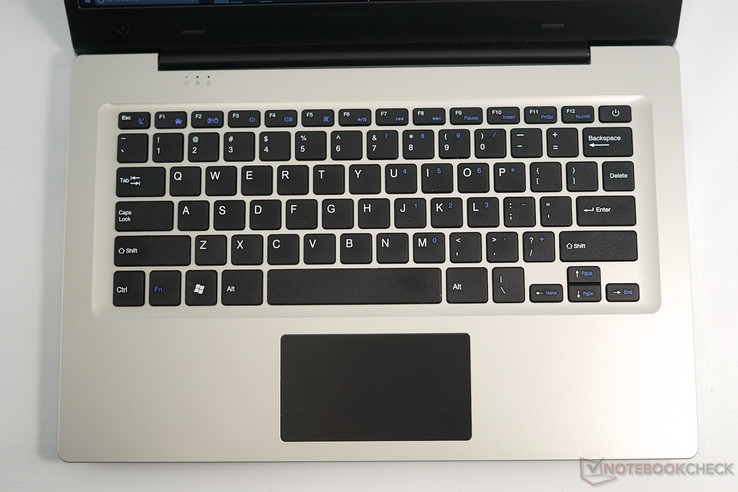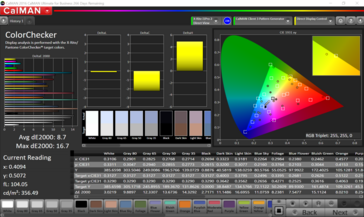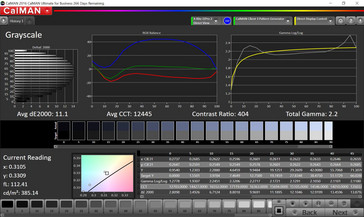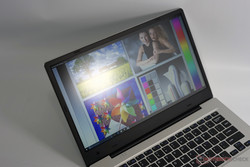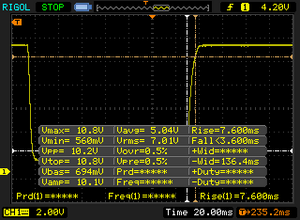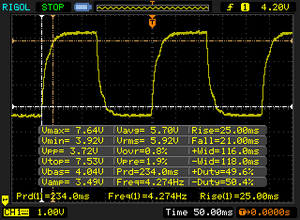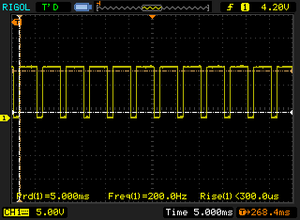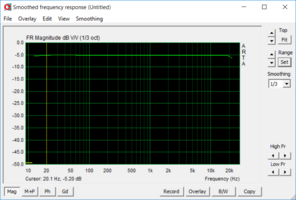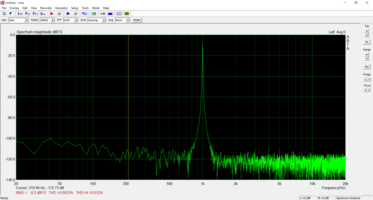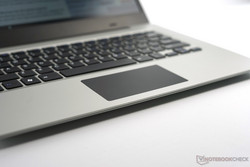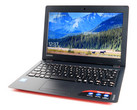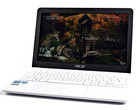Jumper EZBook 3 (N3350, FHD) Laptop Review

For the original German review, see here.
Update 2017/03/24: Rechecked and corrected Wi-Fi battery life
Jumper's EZBook 3's recommended price of 343 Euros (~$370), or even below 200 Euros (~$216) in bargain sites, places it at the very bottom of the low-cost sector. A Full HD panel and up-to-date Apollo Lake SoC are features that are not a matter of course in this price range. Besides other low-cost laptops made in China, such as Chuwi's LapBook 14, some brand-name notebooks, such as Acer's Swift 1, belong to its rivals. Comparisons with Apple's MacBook Air 13 are naturally also interesting as the EZBook follows its design. However, the subnotebooks' prices are worlds apart.
Casing - A Scratch-Sensitive Plastic Air
The design of Jumper's EZBook 3 evidently follows that of Apple's MacBook Air 13. Like its paragon, the underside is beveled toward the front and the laptop looks slimmer than it is due to its slightly curved underside. The relatively narrow display bezel is striking as it is unique in this price range. As in Dell's XPS 13, the webcam has been positioned very unfavorably below the screen's left. Like Apple, Jumper also uses a big centered display hinge. It offers a good compromise between ease of opening and stability.
The EZBook 3 is made completely out of plastic. The stability and feel clearly lag behind those of its paragon, the MacBook Air. The visible manufacturing and gaps are also beyond comparison; the model's price design becomes very obvious here. The stability is satisfactory, but the entire casing is quite easy to warp and also produces some cracking noises. Its scratch resistance is not particularly good, either. The display lid was visibly scratched after carrying it in a backpack in the short test period.
The width and depth of Jumper's EZBook 3 are quite identical with those of the MacBook Air 13. However, it is much thicker. Compared with Chuwi's LapBook 14, it is slimmer. Acer's Swift 1 has a similar height, but it is much bigger when looking down on it.
Connectivity - No USB-C
As for the interfaces, the EZBook does not sport any noteworthy ports and presents itself as traditional. The dedicated power-in prevents recharging the device with a portable power bank or existing USB chargers. This is too bad. USB-C with power delivery like many Chinese competitors already use would have been convenient. Both USB-A ports are not ideal, either. The right USB port only supports the USB 2.0 standard and is correspondingly slow. The mini-HDMI port requires a rather uncommon cable as the thin casing prevents installing a full-size model. However, it functioned impeccably in 4K and 30 Hz in the test (our test monitor does not support 60 Hz via HDMI, and thus we did not test HDMI 2.0). The integrated Apollo Lake SoC and its Gen.9 graphics (based on Skylake) only supports HDMI 1.4 natively unless a DisplayPort converter is used, and Jumper unlikely implements this in this price range. Finally, the EZBook has a headset jack and a moderately fast micro-SD slot.
Micro-SD Card Reader - Sluggish
The performance of the integrated micro-SD card reader is not particularly good and is sooner situated in the lower range. The device with the best test outcomes achieved 257 MB/s and an average of 87 MB/s by comparison. However, some few weaker laptops that only manage 10 MB/s also exist.
| SD Card Reader | |
| average JPG Copy Test (av. of 3 runs) | |
| HP Pavilion x360 11t T5M27AV | |
| HP 250 G5 Y1V08UT | |
| Acer Swift 1 SF114-31-P6F6 | |
| Jumper EZbook 3 | |
| Acer Aspire ES1-332-P91H | |
| maximum AS SSD Seq Read Test (1GB) | |
| HP Pavilion x360 11t T5M27AV | |
| Acer Aspire ES1-332-P91H | |
| Acer Swift 1 SF114-31-P6F6 | |
| Jumper EZbook 3 | |
| HP 250 G5 Y1V08UT | |
Communication
A Realtek RTL8723B 802.11 n Wi-Fi card with just one antenna is inside the EZBook 3. It transmits only in the 2.4 GHz band and presented a mediocre performance in the test. An up-to-date high-speed ac card is considerably faster.
| Networking | |
| iperf3 transmit AX12 | |
| Asus Zenbook UX3410UA | |
| Chuwi LapBook 14 inch 2017 | |
| Jumper EZbook 3 | |
| Acer Swift 1 SF114-31-P6F6 (jseb) | |
| Chuwi Hi10 Pro | |
| iperf3 receive AX12 | |
| Chuwi LapBook 14 inch 2017 | |
| Asus Zenbook UX3410UA | |
| Jumper EZbook 3 | |
| Acer Swift 1 SF114-31-P6F6 (jseb) | |
| Chuwi Hi10 Pro | |
Maintenance - User-Friendly but without Upgrade Options
The underside's base tray can be removed for maintenance and upgrading. Twelve screws and plastic clips secure it. One plastic clip broke and the plastic edge was damaged slightly while removing the underside although we were careful. There is not much that the user can do with the innards. All components are soldered to the motherboard; only the battery can be replaced. An installed M.2 slot (SATA) functioned impeccably with a Toshiba SSD in the test. However, it cannot be installed into the casing since the SSD cannot be fastened with screws and a bulge is also in the way. Thus, the casing would have to be modified for incorporating an SSD safely.
Warranty
We could not find out whether Jumper includes a manufacturer's warranty. However, the retailer Gearbest gives a one-year warranty on laptops purchased in its shop.
Please see our Guarantees, Return Policies and Warranties FAQ for country-specific information.
Input Devices - Satisfactory for the Price
Keyboard
The installed chiclet keyboard looks like the keyboard in the MacBook Air. Unfortunately, it is not backlit and cannot quite compete in terms of stroke and stability. Nevertheless, it was suitable for typing even longer texts in the test thanks to a good combination of layout, pressure point, and size. We noticed the lack of dedicated keys for setting the screen brightness unfavorably. Furthermore, the EZBook 3 is currently not available with a German keyboard. However, the English layout is traditional.
Touchpad
The black ClickPad below the keyboard is not particularly big and its plastic surface does not offer the best gliding qualities, either. It cannot at all be compared with the latest TrackPads, e.g. in the MacBook Pro 13. However, it does a good job for a low-cost ClickPad in a Windows laptop. The integrated key can be used reliably thanks to its good pressure point, and its accuracy was also good in the test. Multi-touch scrolling functioned without issues.
Display - Matte with Shortcomings
A matte Full HD panel with a relatively narrow display bezel and a high maximum brightness sounds very good at first. However, the TN screen's poor viewing-angle stability and moderate color reproduction ruin the impression considerably.
| |||||||||||||||||||||||||
Brightness Distribution: 76 %
Center on Battery: 384 cd/m²
Contrast: 300:1 (Black: 1.28 cd/m²)
ΔE ColorChecker Calman: 8.7 | ∀{0.5-29.43 Ø4.78}
ΔE Greyscale Calman: 11.1 | ∀{0.09-98 Ø5}
53% AdobeRGB 1998 (Argyll 3D)
77.3% sRGB (Argyll 3D)
51.6% Display P3 (Argyll 3D)
Gamma: 2.2
CCT: 12445 K
| Jumper EZbook 3 MS_9003, TN LED, 1920x1080, 14.1" | Acer Swift 1 SF114-31-P6F6 Chi Mei N140BGA-EA3, TN LED, 1366x768, 14" | Apple MacBook 12 (Early 2016) 1.1 GHz APPA027, IPS, 2304x1440, 12" | Teclast Tbook 10s LCD, IPS, 1920x1200, 10.1" | VOYO VBook V3 Chi Mei N116HSE, IPS LED, 1920x1080, 13.3" | Cube i7 Book CDK09 Samsung LTN140W1-L01, IPS, 1920x1080, 10.6" | |
|---|---|---|---|---|---|---|
| Display | -20% | 27% | ||||
| Display P3 Coverage (%) | 51.6 | 40.97 -21% | 66.8 29% | |||
| sRGB Coverage (%) | 77.3 | 61.5 -20% | 95.4 23% | |||
| AdobeRGB 1998 Coverage (%) | 53 | 42.35 -20% | 68 28% | |||
| Response Times | -65% | -76% | -58% | -126% | ||
| Response Time Grey 50% / Grey 80% * (ms) | 46 ? | 32 ? 30% | 41.2 ? 10% | 40 ? 13% | 49 ? -7% | |
| Response Time Black / White * (ms) | 11.6 ? | 30 ? -159% | 30.4 ? -162% | 26.4 ? -128% | 40 ? -245% | |
| PWM Frequency (Hz) | 200 ? | 200 ? | ||||
| Screen | 22% | 64% | 45% | 36% | 51% | |
| Brightness middle (cd/m²) | 384 | 270 -30% | 387 1% | 279 -27% | 195 -49% | 384 0% |
| Brightness (cd/m²) | 341 | 247 -28% | 358 5% | 280 -18% | 200 -41% | 370 9% |
| Brightness Distribution (%) | 76 | 80 5% | 88 16% | 82 8% | 72 -5% | 89 17% |
| Black Level * (cd/m²) | 1.28 | 0.57 55% | 0.47 63% | 0.29 77% | 0.24 81% | 0.37 71% |
| Contrast (:1) | 300 | 474 58% | 823 174% | 962 221% | 813 171% | 1038 246% |
| Colorchecker dE 2000 * | 8.7 | 3.01 65% | 1.6 82% | 6.7 23% | 5 43% | 5.8 33% |
| Colorchecker dE 2000 max. * | 16.7 | 6.33 62% | 4 76% | 10.8 35% | 9.31 44% | 19.8 -19% |
| Greyscale dE 2000 * | 11.1 | 12.73 -15% | 1 91% | 6.8 39% | 5.98 46% | 5.1 54% |
| Gamma | 2.2 100% | 2.36 93% | 2.26 97% | 2.27 97% | 2.17 101% | 2.4 92% |
| CCT | 12445 52% | 14629 44% | 6680 97% | 8466 77% | 6764 96% | 7125 91% |
| Color Space (Percent of AdobeRGB 1998) (%) | 39 | 61.6 | ||||
| Color Space (Percent of sRGB) (%) | 62 | 82.2 | ||||
| Total Average (Program / Settings) | -21% /
-1% | 5% /
34% | -7% /
24% | -45% /
4% | 51% /
51% |
* ... smaller is better
The panel exhibits a visible bluish tint in the grayscales in a non-calibrated state. The TN panel does not do a good job in color reproduction, either. An average DeltaE 2000 of 8.7 leads to very visible color shifts. The average of all tested subnotebooks is presently 5.3, and the superb MacBook 12, for example, even achieves 1.6.
Display Response Times
| ↔ Response Time Black to White | ||
|---|---|---|
| 11.6 ms ... rise ↗ and fall ↘ combined | ↗ 7.7 ms rise | |
| ↘ 3.8 ms fall | ||
| The screen shows good response rates in our tests, but may be too slow for competitive gamers. In comparison, all tested devices range from 0.1 (minimum) to 240 (maximum) ms. » 30 % of all devices are better. This means that the measured response time is better than the average of all tested devices (20.2 ms). | ||
| ↔ Response Time 50% Grey to 80% Grey | ||
| 46 ms ... rise ↗ and fall ↘ combined | ↗ 25 ms rise | |
| ↘ 21 ms fall | ||
| The screen shows slow response rates in our tests and will be unsatisfactory for gamers. In comparison, all tested devices range from 0.165 (minimum) to 636 (maximum) ms. » 78 % of all devices are better. This means that the measured response time is worse than the average of all tested devices (31.6 ms). | ||
Screen Flickering / PWM (Pulse-Width Modulation)
| Screen flickering / PWM detected | 200 Hz | ≤ 99 % brightness setting | |
The display backlight flickers at 200 Hz (worst case, e.g., utilizing PWM) Flickering detected at a brightness setting of 99 % and below. There should be no flickering or PWM above this brightness setting. The frequency of 200 Hz is relatively low, so sensitive users will likely notice flickering and experience eyestrain at the stated brightness setting and below. In comparison: 53 % of all tested devices do not use PWM to dim the display. If PWM was detected, an average of 8111 (minimum: 5 - maximum: 343500) Hz was measured. | |||
The response times range from average to good thanks to TN technology. Unfortunately, Jumper has opted for PWM at 200 hertz for brightness control. Thus, sensitive users will have to count with eye problems during prolonged use.
As mentioned, the viewing-angle stability is the biggest point of criticism on the Full HD panel. Brightness deviations are perceived even when just moving the head slightly. As the last screenshot illustrates, the screen's illumination is not ideal, either. At least backlight bleeding is not an issue in our review sample.
Performance - Apollo Lake Dual-Core
Jumper furnishes the EZBook 3 with the latest Celeron N3350 SoC by Intel. It is based on the Apollo Lake platform and finds support in 4 GB of DDR3. In conjunction with Toshiba's 64 GB eMMC memory chip, the small laptop's performance is relatively average.
Processor - Celeron N3350
Both processor cores are based on the Goldmont architecture and, according to Intel, have been profoundly reworked compared with the former generation. A minor advantage over the older Celeron and Pentium CPUs also becomes obvious in the Cinebench R15 single-core test. The older Core m3 in the MacBook nevertheless remains out of reach. The differences between the dual-cores and quad-cores of both the low-cost Bay Trail and Apollo Lake chips become clear in the multithread benchmark. Surprisingly, the CPU does not throttle significantly in the Cinebench R 15 benchmark.
System Performance - the CPU is a Bottleneck
The weak dual-core obviously limits the system performance. The CPU capacity always skyrocketed to 100% when browsing or installing and launching applications, and it slowed down the system perceptibly. However, this does not look that bad when we compare the performance with PCMark 8. The older Braswell systems are surpassed in the Work benchmark. This looks a bit worse in Home (with a 3D part). The N2400 quad-core devices from the same generation are much faster in both tests.
The modern SoC is, however, perfect for watching videos and YouTube. Here, the integrated hardware accelerator is an advantage.
| PCMark 8 Home Score Accelerated v2 | 1592 points | |
| PCMark 8 Work Score Accelerated v2 | 2207 points | |
| PCMark 10 Score | 1195 points | |
Help | ||
Storage Device
Jumper's little laptop relies on a storage device by Toshiba. It is an eMMC chip with a capacity of 64 GB. It places itself clearly below the slowest SSDs and only has a speed advantage over HDDs. Fast hard drives can achieve a somewhat higher performance in the sequential read and write speeds at most. Compared with other eMMC storage chips, Toshiba's model does not make a good impression. The modules in both the Swift 1 and Switch One present considerably higher transfer rates.
The remaining 38 GB is not much storage capacity for apps and games. Thus, data might have to be stored on an SD card (which only has slow read and write speeds as mentioned above).
| Jumper EZbook 3 Toshiba 064G93 64 GB eMMC | Apple MacBook 12 (Early 2016) 1.3 GHz Apple SSD AP0256 | Asus TransformerBook T302CA-FL010T Samsung CM871 MZNLF128HCHP | Acer Swift 1 SF114-31-P6F6 128 GB eMMC Flash | Chuwi Hi12 Hynix HCG8E 64 GB | Acer Aspire ES1-521-87DN Western Digital Scorpio Blue WD5000LPVX | HP Pavilion 11-k103ng x360 Hitachi Travelstar Z5K500 HTS545050A7E680 | |
|---|---|---|---|---|---|---|---|
| CrystalDiskMark 3.0 | 1814% | 265% | 155% | 134% | -32% | -38% | |
| Read Seq (MB/s) | 151 | 821 444% | 428 183% | 166.5 10% | 141 -7% | 109.6 -27% | 106 -30% |
| Write Seq (MB/s) | 50 | 660 1220% | 124.2 148% | 85 70% | 50 0% | 107.5 115% | 106.1 112% |
| Read 512 (MB/s) | 133 | 672 405% | 283.9 113% | 153.8 16% | 132 -1% | 36.63 -72% | 33.53 -75% |
| Write 512 (MB/s) | 41.3 | 737 1685% | 41.49 0% | 75.6 83% | 44.8 8% | 49.35 19% | 39.03 -5% |
| Read 4k (MB/s) | 5.07 | 16.28 221% | 15.95 215% | 13.2 160% | 17.9 253% | 0.419 -92% | 0.407 -92% |
| Write 4k (MB/s) | 2.47 | 24.87 907% | 14.67 494% | 13.04 428% | 11.4 362% | 1.171 -53% | 1.026 -58% |
| Read 4k QD32 (MB/s) | 16.4 | 271.9 1558% | 98.9 503% | 35.12 114% | 35.3 115% | 1.03 -94% | 0.898 -95% |
| Write 4k QD32 (MB/s) | 2.74 | 223.9 8072% | 15.41 462% | 12.66 362% | 12.1 342% | 1.239 -55% | 1.003 -63% |
Graphics Card - Integrated HD Graphics 500
The smaller Intel HD Graphics 500 graphics card in the Celeron N3350 is considerably slower than Intel's HD Graphics in the N4200 quad-core due to its reduced count of execution units (EUs), and thus it can only keep up with the HD Graphics 405 of the former generation. Throttling was not recorded even after 10 runs of the 3DMark Cloud Gate test. The last test run even presented the best outcome.
| 3DMark 11 - 1280x720 Performance GPU | |
| Asus TransformerBook T302CA-FL010T | |
| Asus Vivobook F556UQ-XO626D | |
| Acer Aspire ES1-332-P91H | |
| Acer Swift 1 SF114-31-P6F6 | |
| HP Pavilion x360 11t T5M27AV | |
| Jumper EZbook 3 | |
| Acer Switch One 10 SW1-011-14UQ | |
| 3DMark 06 Standard Score | 3393 points | |
| 3DMark 11 Performance | 505 points | |
| 3DMark Cloud Gate Standard Score | 2074 points | |
Help | ||
Gaming Performance
Intel's integrated HD Graphics 500 is only strong enough for very undemanding games. Actually, only World of Warcraft, Path of Exile (first two levels only), and League of Legends could be played smoothly in the test. However, the resolution had to be reduced to 1280x720 and medium details in order to achieve smooth frame rates in League of Legends (35 FPS average in a tutorial). Occasional stutters were nevertheless noticed here. Counter-Strike: GO, Dota 2 or World of Warships could not be played smoothly even in minimum settings on the passively cooled laptop.
| World of Warships - 1366x768 Low Preset AF:Trilinear | |
| MSI CX61 2QC 2970M MS-16GD | |
| Acer Aspire ES1-521-87DN | |
| Jumper EZbook 3 | |
| Acer Extensa 2519-C7DC | |
| Chuwi Hi12 | |
| low | med. | high | ultra | |
|---|---|---|---|---|
| World of Warcraft (2005) | 46 | |||
| Diablo III (2012) | 12.7 | |||
| Counter-Strike: GO (2012) | 14 | |||
| Dota 2 Reborn (2015) | 15.9 | |||
| World of Warships (2015) | 19.1 | |||
| Team Fortress 2 (2017) | 21.2 | |||
| X-Plane 11.11 (2018) | 5.3 | |||
| World of Tanks enCore (2018) | 34 (error at the end) | 4 (error at the end) | ||
| Strange Brigade (2018) | 0 game wont start | |||
| League of Legends (2019) | 28.2 | 20.2 | 13.9 | 12.6 |
| Hearthstone (2020) | 23.9 | 24 | 11.2 | |
| Valorant (2020) | 9.09 |
Emissions
System Noise
Thanks to the passive cooling of the Celeron N3350, no fan noises are audible in any load state. We did not hear the often common coil-whining from our review sample.
Temperature
Although the small SoC is cooled passively, Jumper's laptop stays agreeably cool in all scenarios. We measured a maximum of 42 °C on the surfaces during high load or prolonged gaming.
(±) The maximum temperature on the upper side is 41 °C / 106 F, compared to the average of 35.9 °C / 97 F, ranging from 21.4 to 59 °C for the class Subnotebook.
(±) The bottom heats up to a maximum of 42 °C / 108 F, compared to the average of 39.3 °C / 103 F
(+) In idle usage, the average temperature for the upper side is 24.2 °C / 76 F, compared to the device average of 30.8 °C / 87 F.
(+) The palmrests and touchpad are reaching skin temperature as a maximum (32 °C / 89.6 F) and are therefore not hot.
(-) The average temperature of the palmrest area of similar devices was 28.2 °C / 82.8 F (-3.8 °C / -6.8 F).
Speakers
Both stereo speakers are situated on the front underside and their maximum volume of 80.4 dB is sufficiently loud. However, they do not play enjoyable music as their sound range is definitely too limited. A very visible difference can be seen in the frequency diagram especially when compared with the outstanding speakers in the MacBook 12. Both the high and low tones decrease very quickly, and thus videos are no fun, either.
Fortunately, the integrated headphone jack was convincing in the test. Our AKG K701 was loud and clear without noise in the test. This is considerably better than known from most other low-cost laptops and tablets made in China.
Audio Ports
Fortunately, the integrated headphone jack was convincing in the test. Our AKG K701 was loud and clear without noise in the test. This is considerably better than known from most other low-cost laptops and tablets made in China.
The integrated headset port showed also good test results with Arta (input and output directly connected). SNR, THD+N and sinus sweep were quite good for the price and
Jumper EZbook 3 audio analysis
(±) | speaker loudness is average but good (80.4 dB)
Bass 100 - 315 Hz
(-) | nearly no bass - on average 25.1% lower than median
(±) | linearity of bass is average (10.6% delta to prev. frequency)
Mids 400 - 2000 Hz
(±) | higher mids - on average 7.2% higher than median
(±) | linearity of mids is average (10.8% delta to prev. frequency)
Highs 2 - 16 kHz
(±) | higher highs - on average 5% higher than median
(+) | highs are linear (4.4% delta to prev. frequency)
Overall 100 - 16.000 Hz
(±) | linearity of overall sound is average (27.3% difference to median)
Compared to same class
» 88% of all tested devices in this class were better, 3% similar, 9% worse
» The best had a delta of 5%, average was 18%, worst was 53%
Compared to all devices tested
» 83% of all tested devices were better, 4% similar, 13% worse
» The best had a delta of 4%, average was 24%, worst was 134%
Apple MacBook 12 (Early 2016) 1.1 GHz audio analysis
(+) | speakers can play relatively loud (83.6 dB)
Bass 100 - 315 Hz
(±) | reduced bass - on average 11.3% lower than median
(±) | linearity of bass is average (14.2% delta to prev. frequency)
Mids 400 - 2000 Hz
(+) | balanced mids - only 2.4% away from median
(+) | mids are linear (5.5% delta to prev. frequency)
Highs 2 - 16 kHz
(+) | balanced highs - only 2% away from median
(+) | highs are linear (4.5% delta to prev. frequency)
Overall 100 - 16.000 Hz
(+) | overall sound is linear (10.2% difference to median)
Compared to same class
» 7% of all tested devices in this class were better, 2% similar, 91% worse
» The best had a delta of 5%, average was 18%, worst was 53%
Compared to all devices tested
» 4% of all tested devices were better, 1% similar, 94% worse
» The best had a delta of 4%, average was 24%, worst was 134%
Frequency diagram in comparison (checkboxes above can be turned on/off!)
Energy Management
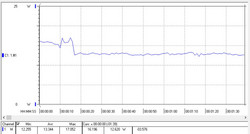
Power Consumption
The power consumption of the brand-new dual-core SoC is quite impressive. The stronger N4200 quad-core SoC consumes considerably more in all tests (e.g. in Acer's Aspire ES1 laptops). Only the older Atom SoCs (with a much lower TDP) are even more economic. When using the MacBook for comparison, it is even a bit more energy efficient in idle, but its load consumption is naturally much higher.
| Off / Standby | |
| Idle | |
| Load |
|
Key:
min: | |
| Jumper EZbook 3 Celeron N3350, HD Graphics 500, Toshiba 064G93 64 GB eMMC, TN LED, 1920x1080, 14.1" | Chuwi Hi10 Pro Z8300, HD Graphics (Cherry Trail), 64 GB eMMC Flash, IPS, 1920x1200, 10.1" | HP 250 G5 Y1V08UT N3060, HD Graphics 400 (Braswell), Samsung CM871 MZNLF128HCHP, TN LED, 1366x768, 15.6" | Apple MacBook 12 (Early 2016) 1.3 GHz 6Y75, HD Graphics 515, Apple SSD AP0256, IPS, 2304x1440, 12" | Acer Swift 1 SF114-31-P6F6 N3710, HD Graphics 405 (Braswell), 128 GB eMMC Flash, TN LED, 1366x768, 14" | Acer Aspire ES1-332-P91H Pentium N4200, HD Graphics 505, WDC Slim WD10SPCX-21KHST0, TN LED, 1366x768, 13.3" | HP Pavilion 11-k103ng x360 N3050, HD Graphics (Braswell), Hitachi Travelstar Z5K500 HTS545050A7E680, IPS, 1366x768, 11.6" | |
|---|---|---|---|---|---|---|---|
| Power Consumption | 23% | -3% | -11% | -21% | -32% | -33% | |
| Idle Minimum * (Watt) | 3.18 | 1.4 56% | 3.9 -23% | 2 37% | 4.1 -29% | 4.5 -42% | 5.3 -67% |
| Idle Average * (Watt) | 6.14 | 4.82 21% | 6.4 -4% | 2.06 66% | 8.3 -35% | 7.6 -24% | 7.1 -16% |
| Idle Maximum * (Watt) | 6.4 | 5.43 15% | 6.5 -2% | 6.94 -8% | 8.6 -34% | 8.5 -33% | 8.2 -28% |
| Load Average * (Watt) | 13.3 | 11.61 13% | 11.1 17% | 22.52 -69% | 13.5 -2% | 17.4 -31% | 15.5 -17% |
| Load Maximum * (Watt) | 13.6 | 12.48 8% | 13.8 -1% | 24.87 -83% | 14.5 -7% | 17.6 -29% | 18.9 -39% |
* ... smaller is better
Battery Runtime
The EZBook 3's lithium-polymer battery situated in the flat part under the wrist rest is a highlight. It manages almost 7 hours of Wi-Fi browsing at a brightness sufficient for indoors (37% = 150 cd/m²) thanks to its energy-efficient hardware. The subnotebook achieved this in a second run after reinstalling Windows. It was only enough for 5.5 hours in the first test. Whether a program running in the background suddenly consumed too much power or Jumper's original installation had a fault cannot be reproduced. The battery's few charging cycles could also be the reason.
We achieved a much better result of 8 hours and 52 minutes in our video test at just below 150 cd/m². However, the SoC is hardly loaded as the video is decoded efficiently via hardware acceleration in the N3350.
Recharging the small battery in our review sample was torturous. Although it took 2 hours and 15 minutes for it to recharge to 90%, another hour was needed until it was full (during use). Unlike many competitors in this price range, Jumper's laptop does not support charging via USB-C or micro-USB despite its economical hardware. Thus, it is not possible to simply connect an external power bank.
Pros
Cons
Verdict
The EZBook 3 is an affordable and light laptop with a matte and bright screen, noiseless (because passive) cooling, and appealing looks. As usual, some concessions have to be made in this price range. Mediocre build and material quality, limited viewing angles, PWM at 200 Hz, very low performance, and a sooner moderate battery life are the drawbacks that have to be accepted. Although the touchpad and keyboard are far remote from its paragon, the MacBook Air, they are quite useful for occasional work. Like many products made in China, the EZBook 3 currently does not carry a CE label (and the tests involved), and the buyer is almost completely dependent on the shop where the laptop was purchased in warranty cases. Driver support is not available, either. However, at least it is possible to directly use Intel's graphics drivers.
Jumper's EZBook 3 is presently available in silver at Gearbest for 194.25 Euros (~$210) from the EU warehouse (list: 343 Euros, ~$370). This price will likely be very attractive to users who can live with the mentioned shortcomings.
Jumper EZbook 3
- 03/24/2017 v6 (old)
Klaus Hinum




